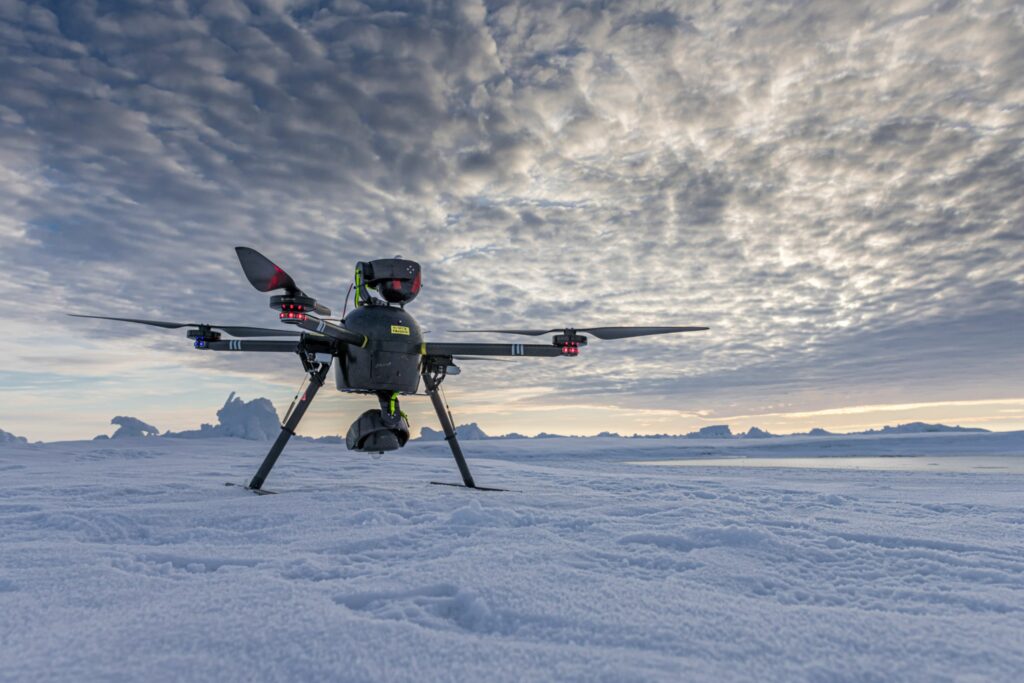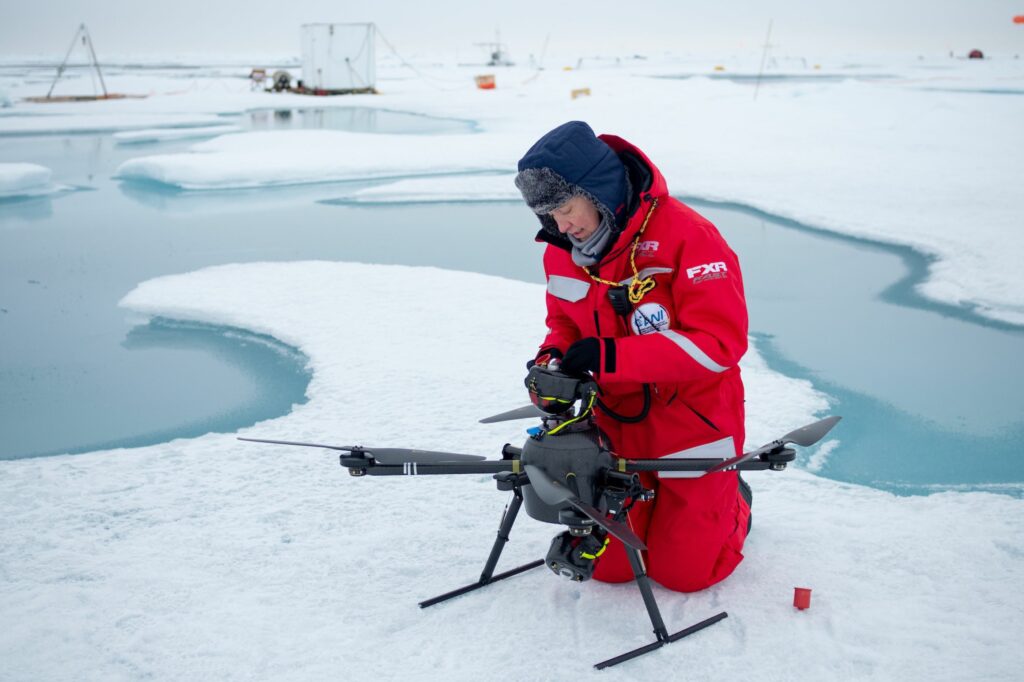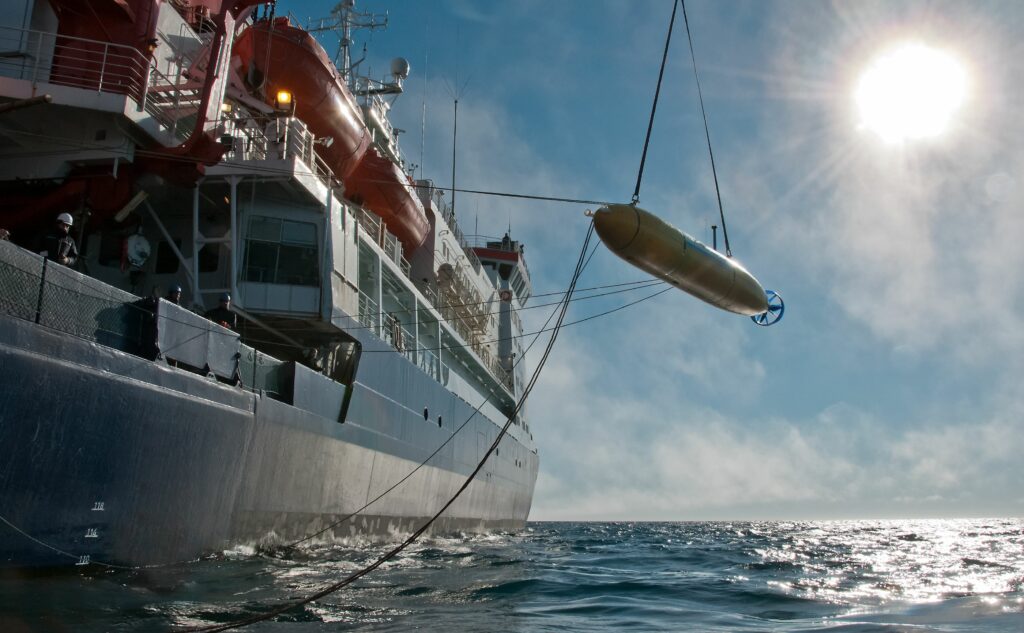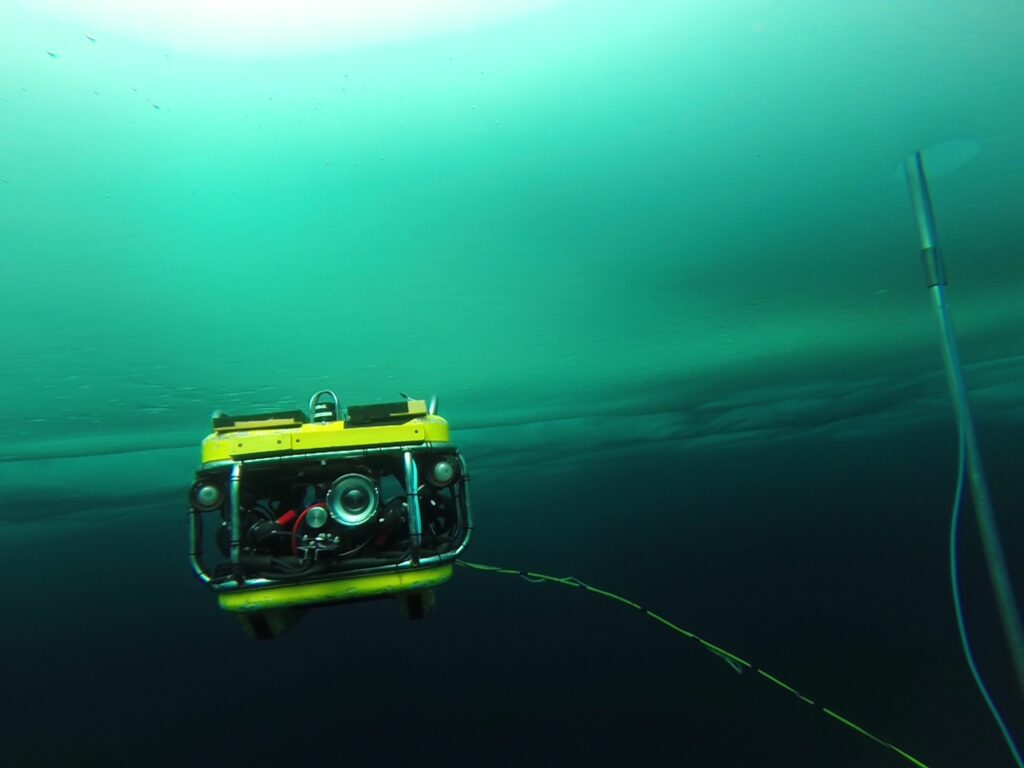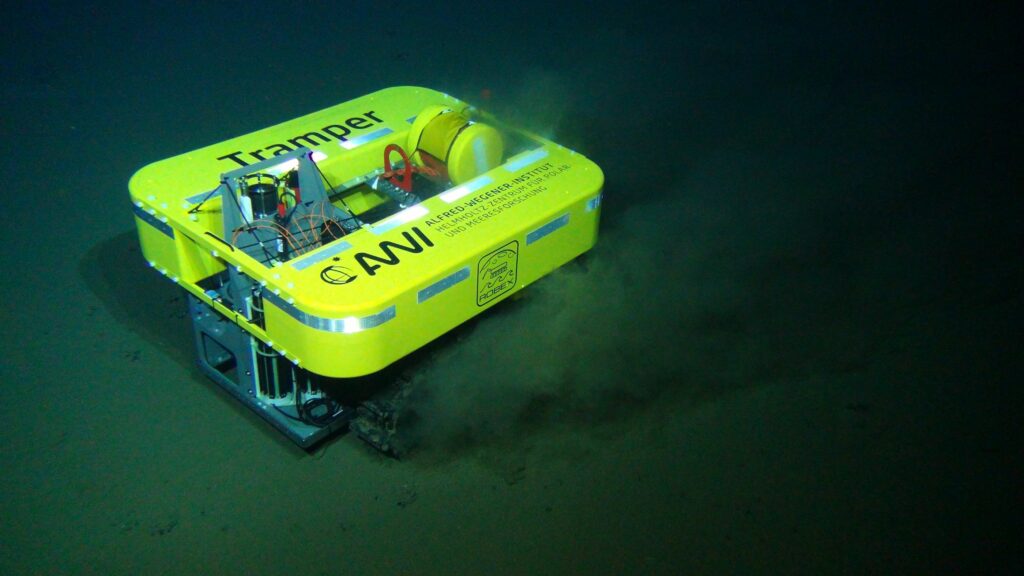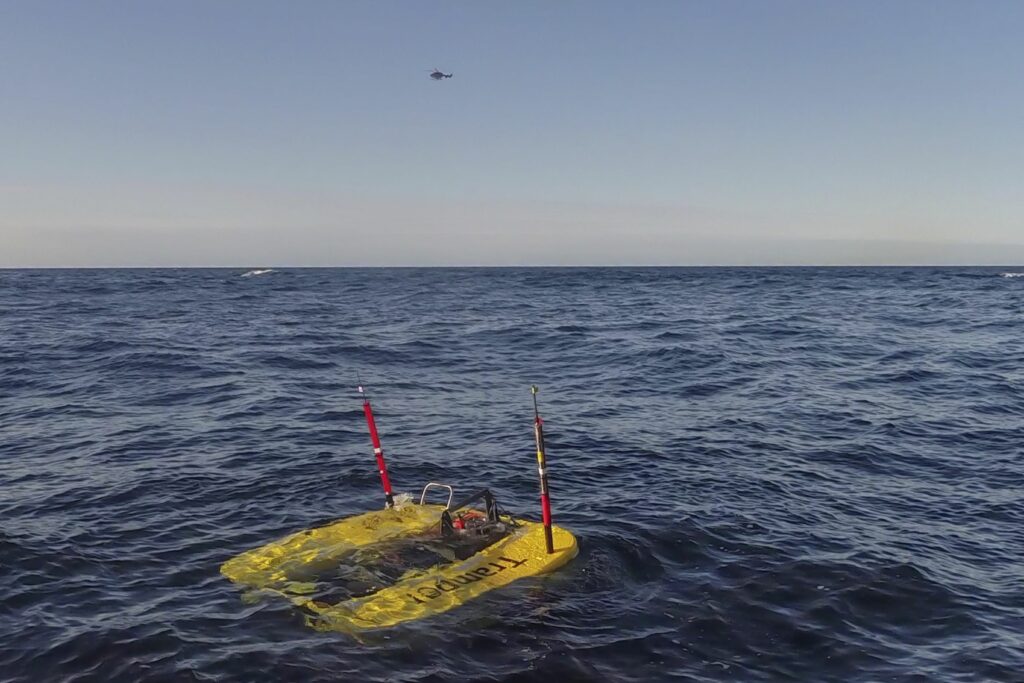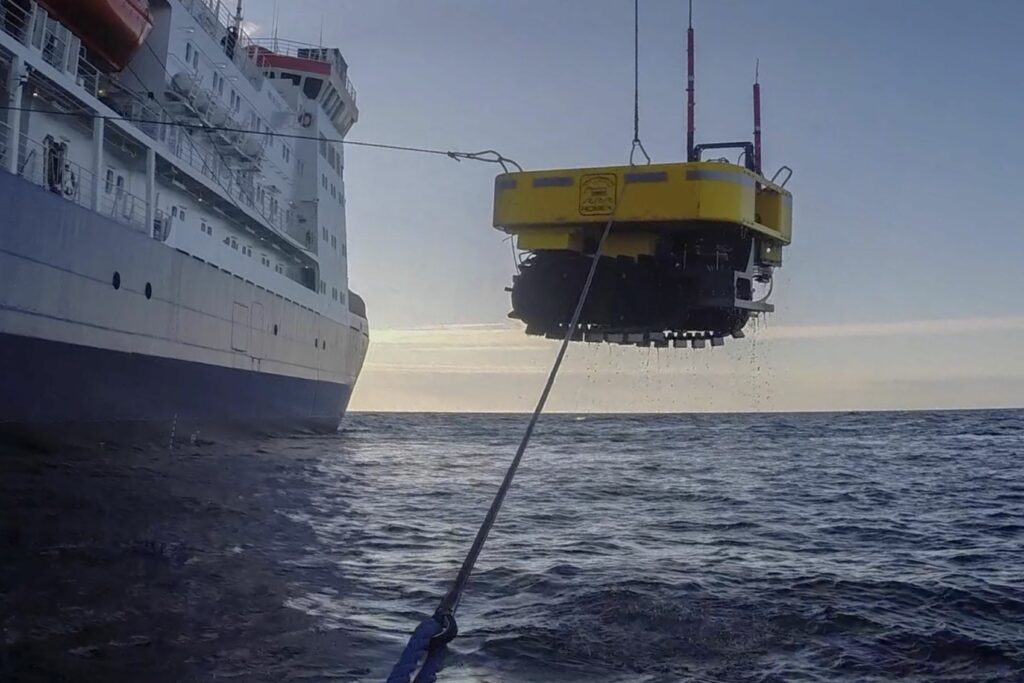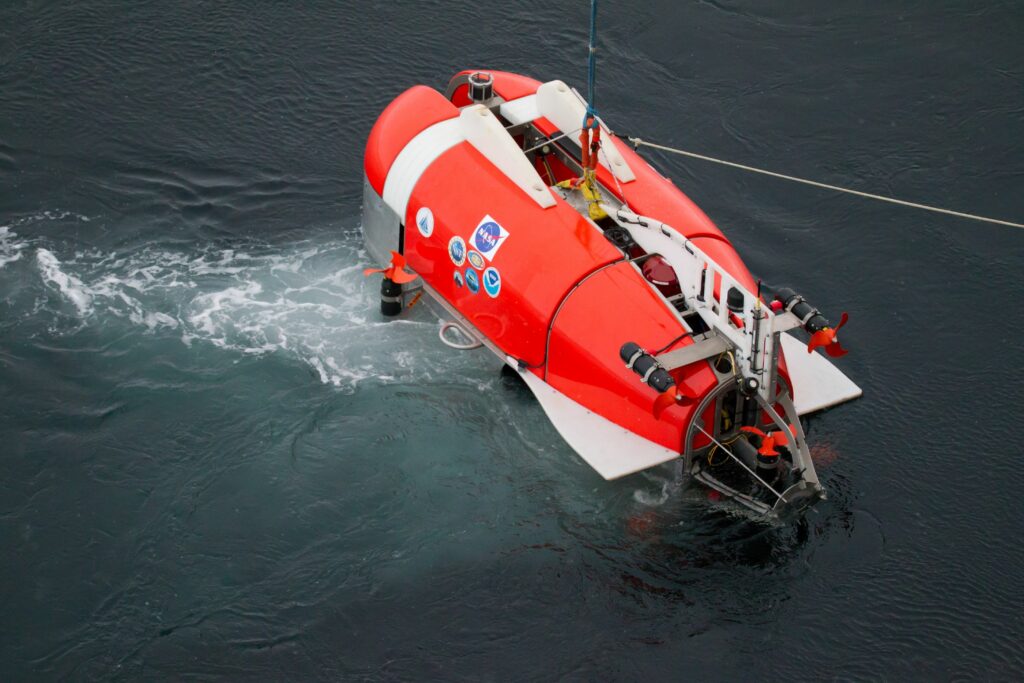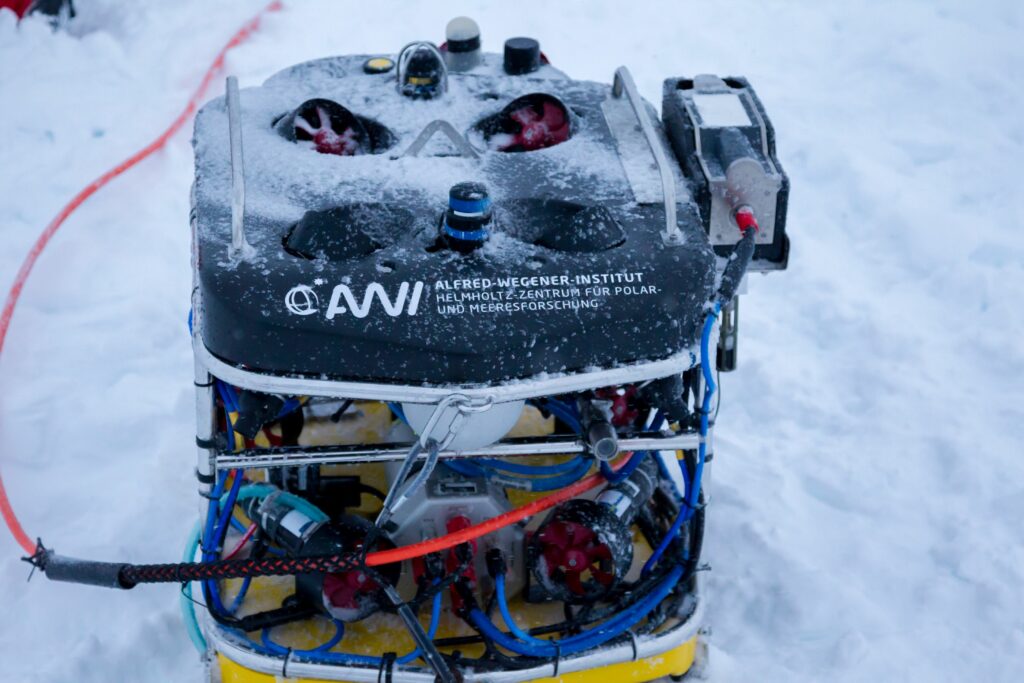From the ship to the deep sea
The new Polarstern’s working deck features an impressive innovation: a large moonpool extends throughout the ship below the water line. Like a spring, it offers direct access to the open water, even when the ship is surrounded by sea ice. A winch system is mounted above the pool, which can be used to lower equipment (e.g. ROVs, water / CTD samplers, or multicorers) into the water, where they can be deployed for various types of fieldwork. While the ship is in motion, the moonpool can be sealed both from above and below, making the working deck freely accessible – and ensuring no additional drag is created.
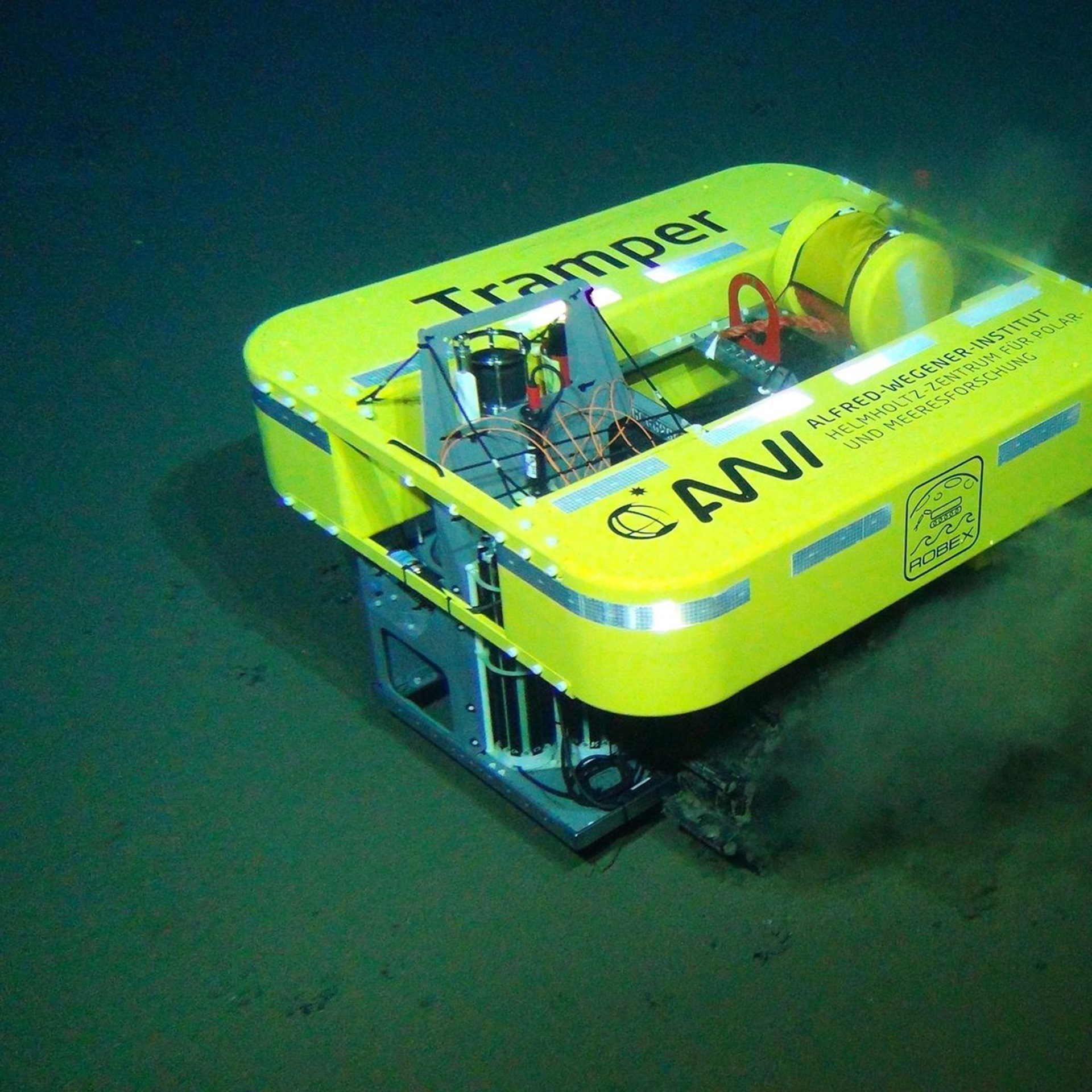
Navigational support and essential tools for research fieldwork: Highly specialised drones for operating in the ice.
Up, up and away
The new Polarstern will feature a dedicated area for its fleet of drones, near the onboard helicopter. In addition to standard commercially available camera drones weighing a few hundred grams, massive special-purpose models tipping the scales at up to 250 kilograms are also planned.
These highly-specialized drones are equipped e.g. with laser scanners that can provide three-dimensional models of the ice surface, or specially designed cameras that offer insights into the ice’s properties. Beyond their scientific value, they can help the crew find the best and safest route through the ice. In addition, the fleet will tentatively include “heavy-lift drones.” Measuring up to three metres in diameter, they can gather samples from the air, ice or water. Deploying them boosts efficiency, as the need to transport researchers to the ice in order to gather samples is omitted. Depending on the given research focus, the drones can be flexibly fitted with a range of sensors, ensuring their fields of application and the corresponding research options can be steadily expanded.
